First-party data has gradually transitioned from a luxury to a necessity in today’s world of rapid app advertising.
As privacy regulations get stricter and users start to be more particular about sharing their information, first-party data empowers you to connect with your audience in an authentic manner.
This type of data, being collected directly from the consumer, becomes more reliable and helps in creating personalized and effective ad campaigns.
Whether you’re looking to boost engagement or drive conversions, leveraging first-party data can transform your app marketing strategies.
- Understanding First-Party Data in App Advertising
- Collecting First-Party Data from Your App Users
- Leveraging First-Party Data for Personalized Ad Campaigns
- Ensuring Compliance with Data Privacy Regulations
- Measuring the Impact of First-Party Data on App Advertising
- Maximizing the Potential of First-Party Data in App Advertising
- Frequently Asked Questions About First-Party Data in App Advertising
Understanding First-Party Data in App Advertising
Before diving into strategies, it’s essential to understand what first-party data is and why it plays a crucial role in app advertising.
First-party data refers to information directly collected from your users through various interactions within your app.
Unlike second or third-party data, which comes from external sources, first-party data is proprietary, giving you unmatched control and insights.
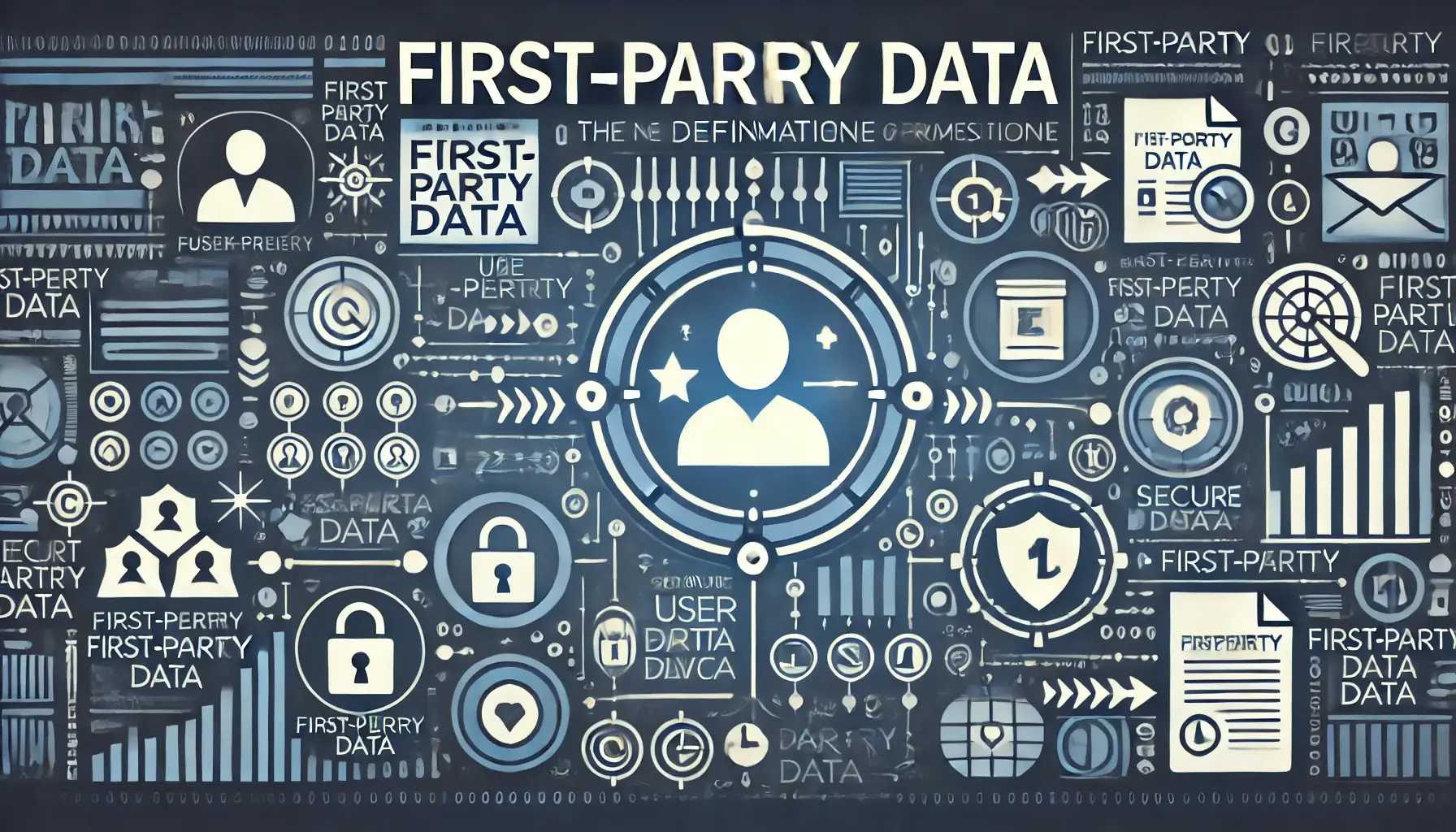
Understanding the value of first-party data for accurate and personalized app advertising.
Definition and Importance of First-Party Data
First-party data is collected directly from your app users through their interactions, such as app usage, preferences, or purchase history.
Because of this, it tends to be highly accurate and specific to your audience.
It’s the bedrock of any successful advertising strategy because it lets you understand user behavior at a detailed level, enabling precise targeting and personalizationThe process of tailoring content or ads to meet individual user preferences..
- Accuracy: Since it is collected directly, first-party data is more reliable than third-party alternatives.
- Control: You own this data, which means you can decide how to use it without relying on external parties.
- Cost-Effectiveness: Unlike purchased data, first-party data is derived from your app’s operations, saving costs over time.
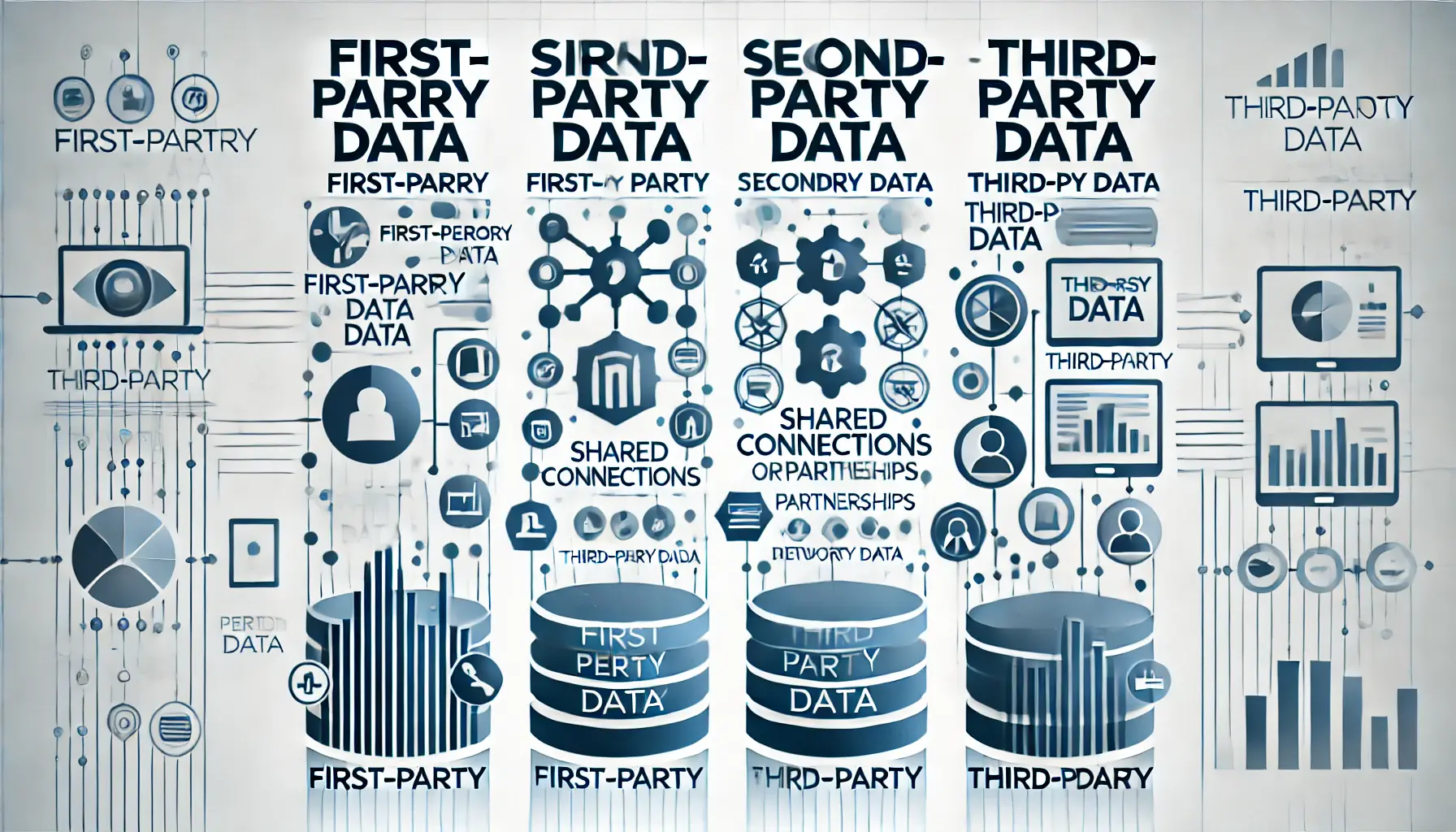
Visualizing the distinctions between first-party, second-party, and third-party data in app advertising.
Differences Between First, Second, and Third-Party Data
To grasp the full potential of first-party data, it’s helpful to distinguish it from other types of data:
- First-Party Data: Collected directly from users through your app.
- Second-Party Data: Shared by a trusted partner, typically another app or organization.
- Third-Party Data: Bought from external aggregators, which often lacks precision and personalization.
While each of these types may prove useful, first-party data stands out for its authenticity and the trust it fosters with users.
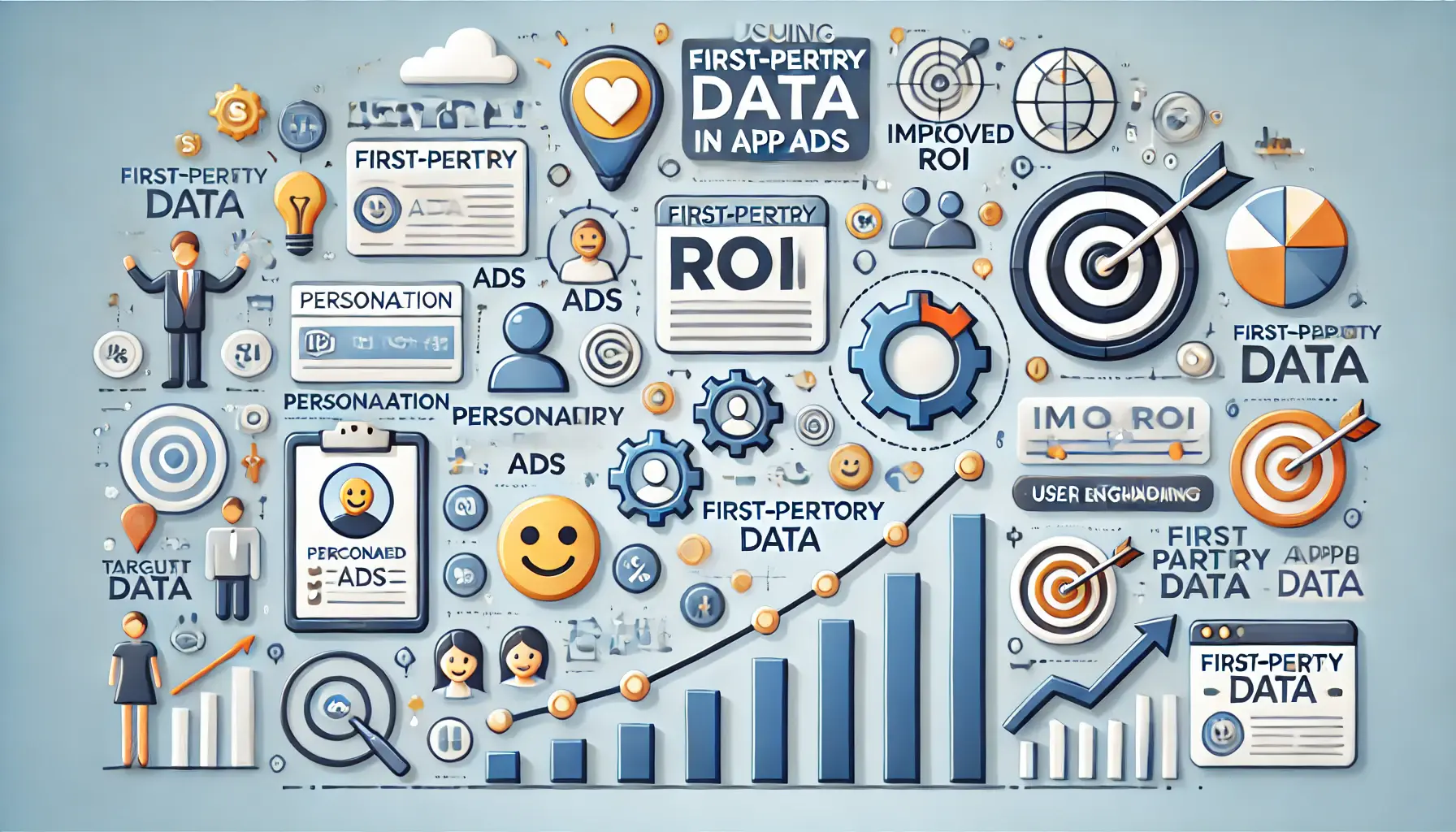
Highlighting the positive impact of first-party data on app advertising effectiveness.
Benefits of Using First-Party Data in App Ads
Incorporating first-party data into your app ad campaigns has many benefits, including:
- Better Personalization: Serve ads that best fit the interests of individual users.
- Better ROI: Targeting the right user segments increases the effectiveness of ad spend.
- Compliance: Using your own data helps you remain compliant with global regulations like GDPR and CCPA.
Using first-party data enables you to build closer relationships with your audience while better achieving advertising goals.
First-party data offers unmatched reliability and personalization for app advertising, setting the foundation for successful marketing strategies.
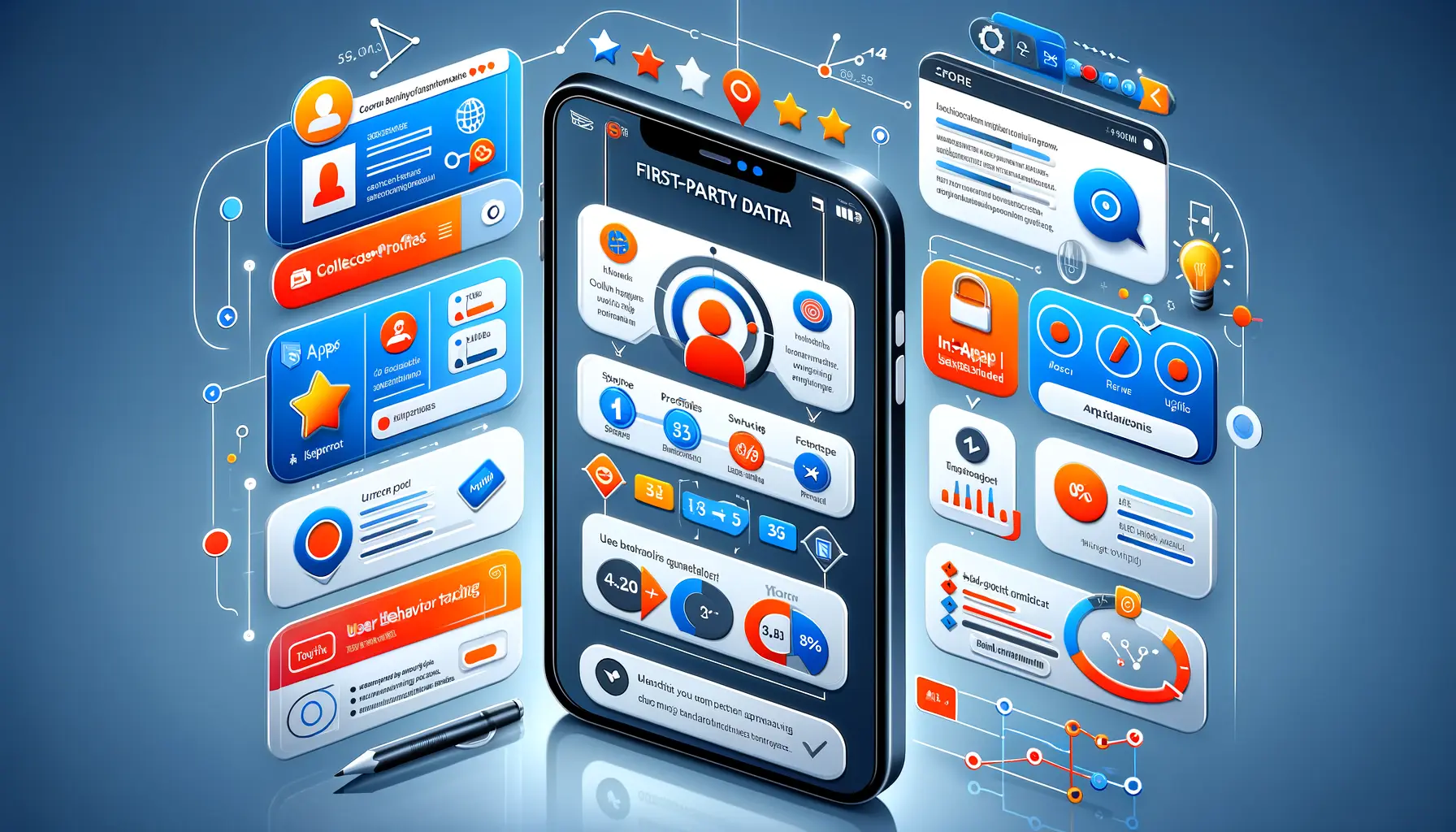
Representing the process of collecting valuable first-party data through user interaction and app features.
Collecting First-Party Data from Your App Users
Gathering first-party data directly from your app users is essential for creating personalized and effective advertising campaigns.
This data provides insights into user behavior, preferences, and interactions within your app, enabling you to tailor your marketing strategies accordingly.
Here are some effective methods to collect first-party data:
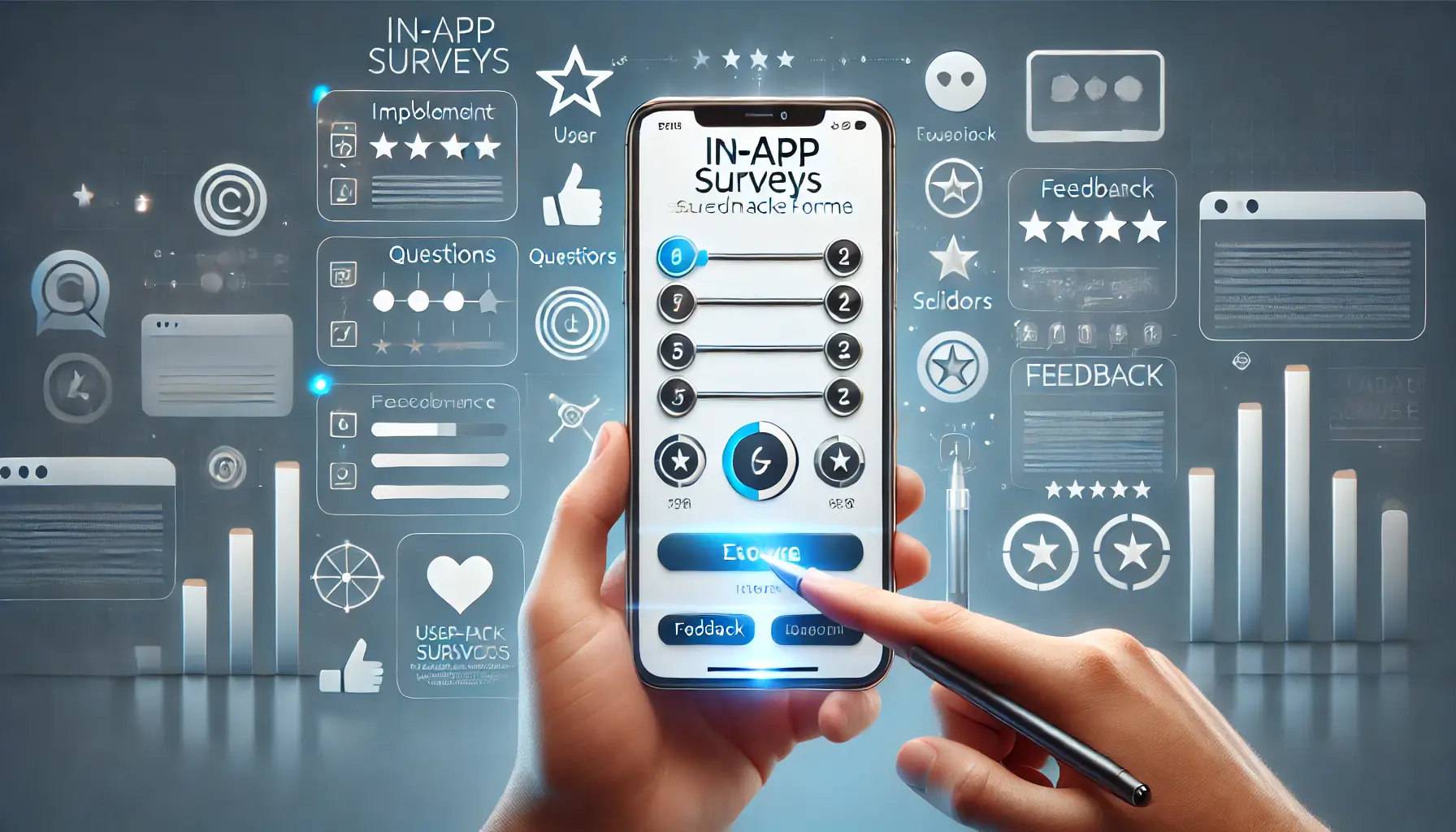
undefined
Implementing In-App Surveys and Feedback Forms
In-app questionnaires and feedback forms are an effective way to understand user preferences and experiences.
By asking users to share their thoughts, you can acquire qualitative data that offers valuable insights into users’ needs and expectations.
- Timing: Publish surveys at appropriate times, such as at the end of a user’s task or when they reach a milestone, to increase response rates.
- Incentives: Offer rewards like discounts or exclusive content to encourage participation.
- Simplicity: Keep surveys concise to respect users’ time and encourage completion.

undefined
Tracking User Behavior and Engagement Metrics
Monitoring how users interact with your app provides quantitative data that is essential for refining your advertising strategies.
Key metrics to track include:
- Session Duration: Understand how long users engage with your app to identify popular features.
- Click Paths: Analyze navigation patterns to enhance the user experience and highlight key content.
- Feature Usage: Identify which features are used most frequently to guide feature development and marketing efforts.
Using analytics toolsSoftware used to gather, process, and analyze data for insights. can automate the gathering and analysis of such data, delivering real-time insights into user behavior.

Visualizing the use of registration and login data to enhance user experience and data collection in apps.
Leveraging Registration and Login Data
Encouraging users to create accounts provides access to rich demographic and behavioral data.
This information can be used to personalize user experiences and target advertising effectively.
- Personalization: Use user profiles to tailor content and offers to individual preferences.
- Communication: Collect email addresses to send targeted communications and updates.
- Compliance: Ensure data collection aligns with privacy legislation to maintain user trust.
By implementing these strategies, you can construct a solid repository of first-party data, improving your ability to create targeted and effective advertising campaigns for your apps.
Collecting first-party data through surveys, analytics, and user registration can provide actionable insights for your campaigns.

Illustrating the power of first-party data in creating personalized ad campaigns and user engagement.
Leveraging First-Party Data for Personalized Ad Campaigns
Utilizing first-party data effectively can significantly enhance the personalization and effectiveness of your ad campaigns.
By understanding your users’ behaviors and preferences, you can tailor your advertising strategies to meet their specific needs, leading to higher engagement and conversion rates.
Here are some strategies to leverage first-party data for personalized ad campaigns:

Visualizing the process of segmenting an audience into groups based on user data for targeted marketing.
Segmenting Your Audience Based on User Data
Audience segmentation involves dividing your users into distinct groups based on shared characteristics or behaviors.
This enables more relevant and effective advertisement targeting.
- Demographic Segmentation: Segment your users by age group, gender, location, or income to create ads that appeal to specific groups of people.
- Behavioral Segmentation: Segment your users based on their behaviors in your app, such as purchase history and feature usage, to deliver relevant content.
- Psychographic Segmentation: Consider users’ interests, values, and lifestyles to create ads that align with their motivations.
Effective segmentation enables you to deliver personalized messages that resonate with each user group, enhancing the overall user experience.

undefined
Creating Tailored Ad Content to Enhance Engagement
Personalized ad content is more likely to capture users’ attention and encourage interaction.
Utilize first-party data to craft messages that speak directly to your audience’s interests and needs.
- Dynamic Content: Utilize data-driven insights to display content in accordance with individual users’ preferences.
- Personalized Recommendations: Recommend products or features based on users’ past behaviors and preferences.
- Localized Messaging: Position ad content to mirror local events, cultures, or languages for heightened relevance.
By syncing your ad creative with user data, you’ll be able to develop more engaging and effective advertising experiences.

Illustrating the power of dynamic ad insertion for personalized, real-time advertising.
Leverage Dynamic Ad Insertion Techniques
Dynamic ad insertion allows for real-time customization of ad content based on user data, enhancing personalization and relevance.
- Real-Time Personalization: Dynamically change ad content to reflect the most recent user behavior or context.
- Cross-Platform Consistency: Ensure that personalized ad experiences are consistent across an increasing number of devices and platforms.
- Scalability: Use dynamic ad strategies that can scale with your growing user base.
Incorporating dynamic ad insertionA technology to customize ad content in real time based on user data. techniques will allow you to deliver personalized experiences at scale, improving user engagement and campaign performance.
Personalization through first-party data drives higher engagement and campaign success by tailoring content to user preferences.

Illustrating the importance of data privacy and compliance with digital regulations in app marketing.
Ensuring Compliance with Data Privacy Regulations
Incorporating first-party data into your app advertising strategies necessitates strict adherence to data privacy regulations.
Compliance not only safeguards your organization from legal repercussions but also fosters trust among your users.
Here are key considerations to ensure your data practices align with current privacy laws:

undefined
Understanding Global Data Privacy Laws
Familiarize yourself with the data protection regulations applicable to your operations.
Prominent frameworks include:
- General Data Protection Regulation (GDPR): Enforced by the European Union, it requires explicit user consent for data collection and grants users specific rights over their personal information.
- California Consumer Privacy Act (CCPA): Applicable in California, USA, CCPA grants consumers rights regarding access, deletion, and sharing of their personal information.
- Protection of Personal Data Law (KVKK): Under Turkey’s data protection law, KVKK places specific responsibilities on data controllers and processors, focusing on user consent and data security.
These regulations are crucial to follow, as violations can result in substantial fines and harm to your brand’s reputation.

Illustrating the process of doing consent management right with clear user control over personal data.
Doing Consent Management Right
Managing user consent effectively is a cornerstone of compliance.
Here’s how to get it right:
- Clear Communication: Use simple language to explain the purpose of data collection and how users’ information will be used.
- Granular Consent Options: Allow users to consent to specific data processing activities rather than providing a blanket agreement.
- Easy Withdrawal Mechanisms: Offer users straightforward methods to withdraw consent at any time.
Utilizing consent management platforms can simplify this process, ensuring that consent records are accurately maintained and easily accessible.

Visualizing the importance of regularly reviewing and updating data policies to ensure compliance and security.
Regularly Reviewing and Updating Data Policies
Data privacy regulations and best practices are continually evolving.
To maintain compliance, consider the following:
- Conduct Routine Audits: Regularly assess your data collection and processing activities to ensure they align with current laws.
- Update Privacy Policies: Revise your privacy policy to reflect changes in data practices or legal requirements and communicate these updates to users.
- Train Staff: Educate your team about data privacy obligations and the importance of adhering to established protocols.
By proactively managing data privacy practices, you can build trust with your users and reduce potential legal risks.
Compliance with laws like GDPRGeneral Data Protection Regulation, a European Union law on data privacy and protection. and CCPACalifornia Consumer Privacy Act, a California law giving consumers rights over their personal data. is vital to avoid penalties and maintain user trust.

Illustrating the measurement of first-party data’s impact on app advertising performance.
Measuring the Impact of First-Party Data on App Advertising
Effectively leveraging first-party data can significantly enhance your app advertising strategies.
To understand its true value, it’s essential to measure its impact accurately.
Here are key methods to assess how first-party data influences your advertising efforts:

Visualizing the implementation of incrementality testing in app advertising to measure campaign effectiveness.
Implementing Incrementality Testing
Incrementality testing provides a clear picture of the value created by your ad campaigns beyond organic user behavior.
By comparing a group exposed to your ads with a control group that isn’t, you can measure the true lift in key performance indicators (KPIs) such as installs, in-app purchases, or user engagement.
- Designing Controlled Experiments: Create test and control groups to isolate the effects of your advertising efforts.
- Analyzing Results: Gauge the variations in KPIs between the test and control groups to ascertain the incremental effect of your advertising campaigns.
- Optimizing Strategies: Use the insights from incrementality tests to improve targeting and messaging for better returns.
By carrying out incrementality tests, you can directly attribute user activity to your ad campaigns, providing a true picture of their performance.

Illustrating the power of advanced analytics tools in optimizing app advertising performance.
Leveraging Advanced Analytics Tools
Advanced analytics platforms provide comprehensive insights into user behavior and campaign performance.
Tools like Google Analytics 4 offer an all-inclusive view across web and app interactions, enabling you to:
- Track User Journeys: Monitor how users navigate through your app to identify areas for improvement based on drop-offs.
- Measure Conversion Rates: Assess the percentage of users taking desired actions, such as making a purchase or signing up.
- Assess User Engagement: Understand user involvement by evaluating metrics like session duration and frequency.
Leveraging these tools enables data-driven decision-making, enhancing the effectiveness of your advertising strategies.
Visualizing the process of tracking Key Performance Indicators (KPIs) to optimize app advertising campaigns.
Key Performance Indicator (KPI) Tracking
To monitor the performance of your app advertising campaigns, it’s essential to regularly track KPIs.
Key metrics to focus on include:
- Cost Per Install (CPI): Calculate the average cost of acquiring a new user through advertising.
- Lifetime Value (LTV): Measure the total revenue generated by a user over their lifetime with your app.
- Return on Ad Spend (ROAS): Evaluate the revenue earned for every dollar spent on advertising.
By closely monitoring these KPIs, you can gauge the effectiveness of your ad spend and make data-driven decisions to optimize your campaigns.
These measurement techniques will help you understand how first-party data impacts your app advertising efforts, enabling more effective and efficient marketing strategies.
Measuring first-party data’s impact using incrementality testingA method to measure the true impact of ad campaigns by comparing test and control groups. and advanced analytics tools optimizes campaign strategies.

Illustrating the maximization of first-party data to enhance app advertising campaigns and drive marketing success.
Maximizing the Potential of First-Party Data in App Advertising
First-party data is transforming the way businesses approach app advertising, offering unparalleled insights and opportunities for personalization.
Throughout this article, we’ve explored the strategies and tools that make first-party data a cornerstone of successful advertising campaigns.
By implementing these methods, you can elevate your marketing efforts and build stronger connections with your audience.

Illustrating the importance of first-party data in improving user engagement and advertising outcomes.
Why First-Party Data Matters
The advantages of first-party data are obvious: it is collected directly from your users for accuracy and relevance, as opposed to third-party alternatives.
With this, you can:
- Provide personalized advertisement experiences: Tailor ads to resonate with individual users.
- Optimize efficiency and ROI: Target specific audiences to improve campaign performance.
- Meet global data privacy regulations: Stay compliant while maintaining user trust.
These benefits underscore the necessity of integrating first-party data into your advertising strategies.

Visualizing the key takeaways for leveraging first-party data to optimize advertising strategies and enhance user engagement.
Key Takeaways for Leveraging First-Party Data
To fully realize the potential of first-party data, consider these essential steps:
- Collect Data Effectively: Utilize surveys, engagement metrics, and registration details to gather valuable insights.
- Personalize Campaigns: Segment your audience, craft tailored ad content, and employ dynamic ad insertion to enhance engagement.
- Ensure Compliance: Stay aligned with global data privacy laws and implement robust consent management practices.
- Measure Impact: Apply incrementality testing, advanced analytics, and KPI tracking to evaluate campaign performance and refine future strategies.

Illustrating the long-term benefits of embracing first-party data for sustained success in app advertising.
Embracing First-Party Data for Long-Term Success
Integrating first-party data into app advertising isn’t just a trend; it’s a necessity in today’s competitive environment.
By prioritizing accuracy, personalization, and compliance, you can create advertising campaigns that deliver meaningful outcomes.
Whether your goal is to boost user engagement, increase conversions, or build long-term trust, first-party data remains your most valuable asset.
Remember, first-party data is dynamic in nature.
Continuously revisit and update your strategies to align with evolving user expectations and regulatory requirements.
By doing so, you can ensure your app’s sustained growth and success in the ever-changing world of digital marketing.
Continuously refining strategies based on first-party data ensures sustained app growth and success.
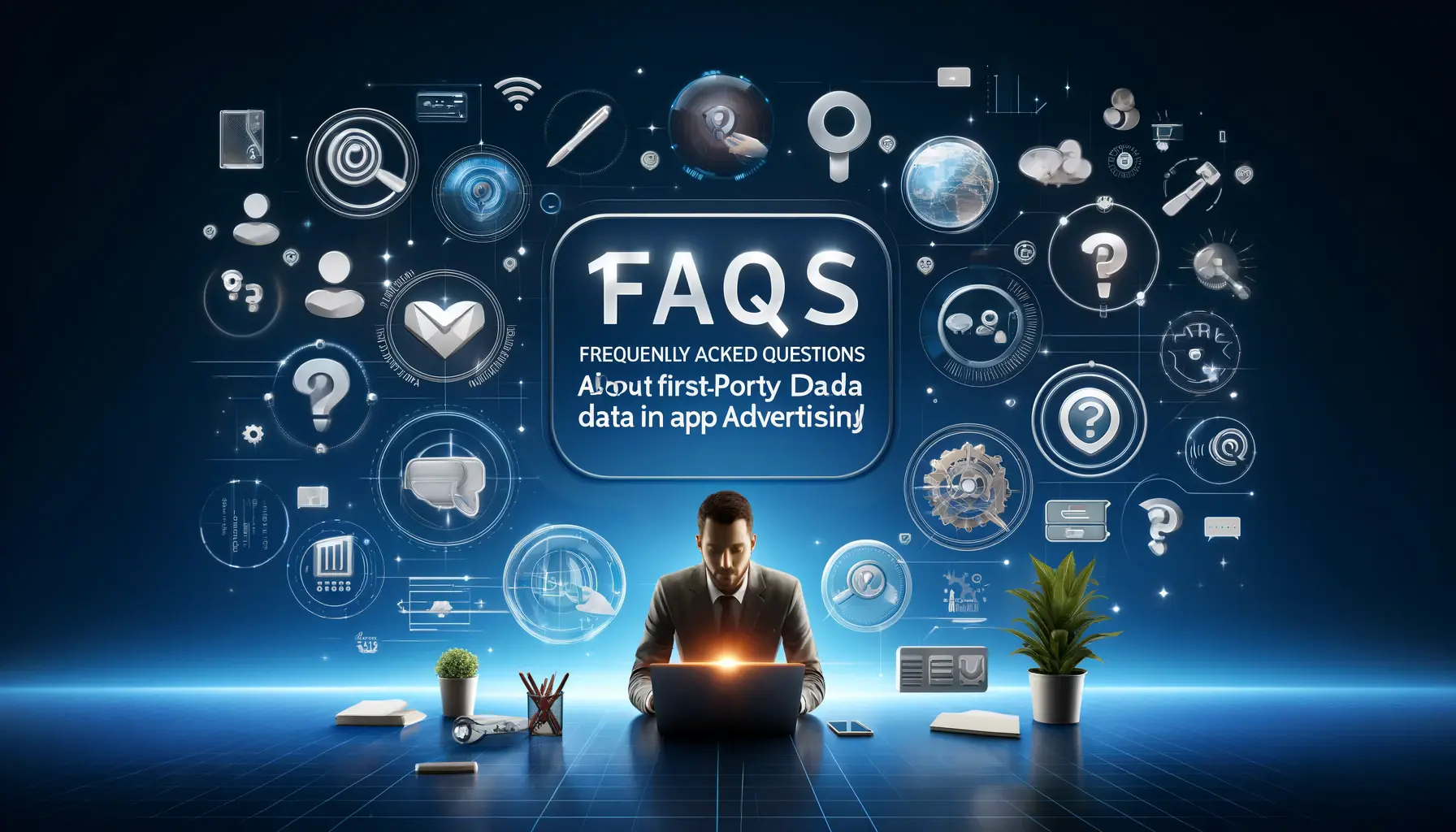
Illustrating the concept of frequently asked questions about first-party data in app advertising.
Your campaigns can be managed by an agency specialized in Google Ads, check out our service page.
Frequently Asked Questions About First-Party Data in App Advertising
Understanding the nuances of first-party data is crucial for effective app advertising.
Below are some common questions and concise answers to help clarify key concepts.
First-party data refers to information collected directly from your app users, such as their behaviors, preferences, and interactions within the app.
It provides accurate and relevant insights for personalized advertising.
Collect first-party data through in-app surveys, tracking user behavior and engagement metrics, and gathering information during user registration and login processes.
First-party data offers precise insights into user preferences, enabling the creation of tailored ad content that resonates with individual users, thereby enhancing engagement and conversion rates.
First-party data is collected directly from your users; second-party data is another organization’s first-party data shared with you; third-party data is aggregated from various sources by external entities.
Stay informed about global data privacy laws, implement clear consent management practices, and regularly review and update your data policies to align with current regulations.
Utilize incrementality testing, advanced analytics tools, and track key performance indicators (KPIs) such as cost per install (CPI) and return on ad spend (ROASReturn on Ad Spend, a metric to evaluate the revenue earned per dollar spent on advertising.) to assess campaign effectiveness.
By leveraging first-party data, you can deliver personalized ad experiences that align with user interests and behaviors, leading to increased engagement and satisfaction.
Challenges include ensuring data privacy compliance, effectively managing and analyzing large datasets, and integrating data insights into actionable advertising strategies.
Enhance data collection by implementing user-friendly surveys, utilizing analytics tools to monitor in-app behavior, and encouraging user registrations to gather comprehensive demographic information.












